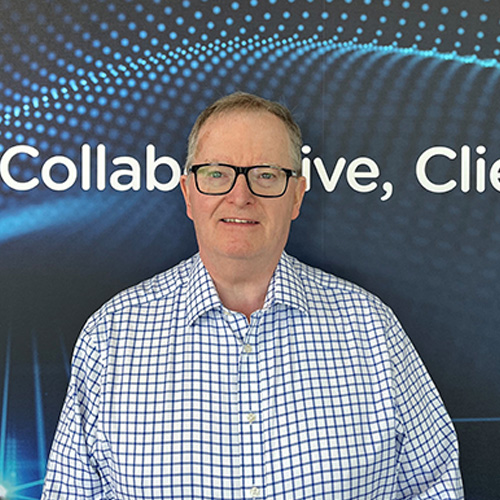In Part Two of this Editor’s Question, we gain further insight from experts at SMS, Building Minds and Stellium Datacenters, as well as how CIOs must balance environmental promises and challenges.
According to Gartner, the benefits of Artificial Intelligence (AI) need to be balanced against the environmental implications and unintended consequences arising from hardware, model training and energy consumption. CIOs can use their digital knowledge and foundation to support the sustainability efforts of their organisations when implementing AI initiatives.
“Gartner’s 2023 CEO survey showed that environmental issues entered the top 10 priority ranking for the first time in the history of the survey,” said Bettina Tratz-Ryan, VP Analyst at Gartner. “At the same time, CIOs are under increasing pressure from their executives, customers, employees, investors and regulators to initiate or reinvigorate their IT for sustainability programmes.
“Almost two-thirds (64%) of CEOs surveyed said combining digitalisation, such as AI adoption, and environmental sustainability is a growth opportunity. CIOs should take that as a call to be more proactive in establishing their leadership through the execution of sustainability transformation strategies and use sustainability as a platform for growth,” added Tratz-Ryan.
For most CIOs, delivering on mandates and requirements means tracking and tracing on business KPIs, such as product carbon footprint or energy intensity. “It is a matter of how the CIO applies their digital foundation, or their digital dividend, to accommodate their organisation’s digitalization metrics, while delivering on the sustainability requirements – two for one,” said Tratz-Ryan. “Above all, even if the business is not prioritising sustainability yet, the CIO should make their digital foundation sustainability-ready.”
Being sustainability-ready applies to cloud and storage, infrastructure and operations, digital threads and the rapidly growing adoption of AI.
Weigh AI benefits against environmental risks and challenges
Although 78% of surveyed CEOs said the benefits of AI outweigh the risks, the increasing number of organisations using AI, including Generative AI (GenAI) is leading to a growing environmental footprint of AI.
Gartner predicts that by 2030, AI could consume up to 3.5% of the world’s electricity. “AI consumes a lot of electricity and water. This negative impact should be mitigated,” said Pieter den Hamer, VP Analyst at Gartner. “Executives should be cognizant of AI’s own growing environmental footprint and take active mitigation measures. For example, they could prioritise (cloud) data centres powered by renewable energy”.
Gartner said public cloud providers can produce 70% to 90% fewer GHG emissions than traditional server rooms, owned data centres and midsize data centre facilities.
However, AI is not only bad news for environmental sustainability. In fact, AI’s own footprint is more than eclipsed by the potential use of AI to boost many sustainability initiatives.
“This can only be achieved if business and IT leaders proactively initiate and foster a portfolio of AI initiatives that help achieve the sustainability and environment, social and governance (ESG) goals of their organisations,” said den Hamer. “For instance, AI can be used to predict demand more accurately and reduce the usage of raw materials and energy in manufacturing.
“Overall, ifused in the right way and focused on the right use cases, AI can help companies mitigate sustainability risk, optimise costs and drive growth,” added den Hamer.
Mark Evans, CIO, SMS

Companies are increasingly being held more accountable for their ESG credentials which filters down into everything – even talent attraction involves being able to demonstrate the organisation’s ESG credentials. Beyond it being good business practice, it is vital that we consider how our business activities impact the world around us.
CIOs often drive the transformation agenda, or at the very least, are the role holders in an organisation who are typically expected to drive the innovation and identify how new technologies can be applied for business value and advantage while improving overall sustainability. Thus, involving doing the obvious things like relying on renewable energy sources, choosing energy efficient options, through to practical steps such as repurposing tech equipment or effectively recycling it at the end of its useful ‘corporate life’.
However, it goes beyond this, as it’s our responsibility to ensure sustainability is part of our architecture and is considered right throughout the supply chain. Technology and digital has already had a massive impact in helping organisations become more sustainable, but clearly there is more we need to do. One thing which we need to do more of is looking at the application of innovative technology and data solutions to ensure optimum route planning for field-based teams while minimising the emissions produced. Digital also provides the means for productivity and collaboration in a distributed workforce, reducing the need for the daily commute and opening flexible ways of working which in turn, reduces carbon emissions.
Finally, the CIO plays a key role in ensuring the organisation has the platforms and the data it needs to measure how sustainably it is operating while evidencing progress against the organisation’s sustainability plans. This is a significant undertaking and involves measuring and understanding a rich mixture of data sources, across business data, financial data and employee data which needs to be distilled down to something understandable to engage and inspire the organisation on its sustainability journey. It also potentially embraces new business functions such as carbon accounting, all of which needs to be supported by the right data and technology platforms and organisational capability.
Dr Jens Hirsch, Chief Scientific Officer, BuildingMinds

Sustainability has become a key aspect of the CIO’s role due to the increasing volume and complexity of data related to environmental, social and governance (ESG) factors. The CIO must serve as an interpreter between regulatory requirements, business logic and IT, especially with the rise of regulations such as the EU’s Corporate Sustainability Reporting Directive (CSRD) and the Sustainable Finance Disclosures Regulation (SFDR).
With more and more data being generated, both in breadth and depth, the CIO must understand the intricacies of the real estate
business and the requirements of data collection, analysis and presentation of results. This expertise is essential in driving sustainability initiatives across various business functions while ensuring compliance with ESG regulations.
As sustainability data becomes a fundamental business asset, CIOs must work ESG data and tools into their technology roadmaps to achieve compliance, meet internal stakeholder demands and drive strategic planning. A robust ESG data strategy is essential for tracking progress towards sustainability goals, such as achieving net zero emissions.
One illustrative use case for this high-tech approach is tracking real estate energy data. Companies need to digitally capture vast amounts of energy consumption and CO2 emissions data to meet ESG regulatory compliance requirements and drive proactive decarbonisation strategies for large office buildings. With data being captured in intervals as short as 30 minutes to one hour from various sources like utility providers, smart meters and IoT sensors, CIOs must integrate this ESG data into their overall data strategies and ensure their IT infrastructure can accommodate it.
Furthermore, companies are employing real-time analysis of their real estate data using AI-driven decarbonisation models. These models provide accurate insights into resource management KPIs and operational carbon emissions, and integrating them into an existing IT estate falls under the CIO’s remit. Scaling AI to provide ongoing visibility into achieving net zero across a real estate portfolio is also a crucial responsibility for today’s CIOs.
In conclusion, the CIO’s role in sustainability has expanded significantly, as they must effectively navigate the complex landscape of data, technology and regulations to drive sustainability initiatives within organisations. By leveraging technology and data, CIOs can support environmental goals while delivering business value and ensuring compliance with emerging ESG regulations.
Paul Mellon, Operations Director, Stellium Datacenters

The directives from national and global authorities have been evolving from guidelines to mandatory requirements, and 2024 represents a giant step forward in terms of compliance, transparency and yet more commitment.
CIOs are increasingly challenged with what has become known as the three pillars of sustainability: environmental, social and economic. They must weave their way through growing legislation to best position their businesses for:
- Efficiency in terms of using AI/ML/HPC to rationalise use of space, power, cooling and actual future footprint requirements.
- Environmental sustainability to preserve and protect the natural environment over time through appropriate practices and policies, meeting present needs without compromising the availability of resources in the future.
- Social sustainability in terms of commitment to create inclusive societies, reduce inequality and ensure long-term well-being for all people while preserving social cohesion and justice.
- Economic sustainability in practice, aiming to create a balance between economic growth, resource efficiency, social equity and financial stability.
Environmental sustainability for data centres translates into Scope 1 and 2 emissions with Scope 3 emission expected to become mandatory this year – this means laying the groundwork now, putting in place the necessary supplier processes and reporting procedures sooner than later. It’s a game changer. It’s no longer just about power and water usage efficiency and emissions, but right across the supply chain, including mitigating and offsetting the embodied carbon from data centre buildings construction and even IT equipment – purchasing, moving and disposing of IT all has an environmental cost and has a huge impact on an organisation’s carbon footprint.
Moving from on-premise to modern colocation data centres or putting more IT workloads into public or hybrid cloud set ups will reduce much of the CIO’s operational headaches in these respects. Many will have renewably sourced power in place, energy efficient cooling, diverse connectivity, sophisticated energy monitoring and reporting platforms.
There are further benefits of not remaining in house. More easily scaling up or down to keep pace with immediate and future IT capacity requirements, avoiding being constrained while also mitigating the cost of underutilised capacity. Such flexibility, along with the inherent security, resilience, environmental and energy efficient credentials of a Tier 3 colocation or cloud hosting provider, cannot be underestimated.
Even though CIOs will be responsible for auditing and reporting on the wider aspects of their IT’s environmental impact, reputable colocation data centre and cloud providers will help relieve them of the burden of Scope 1 and 2 as well as Scope 3 when it becomes mandatory.



